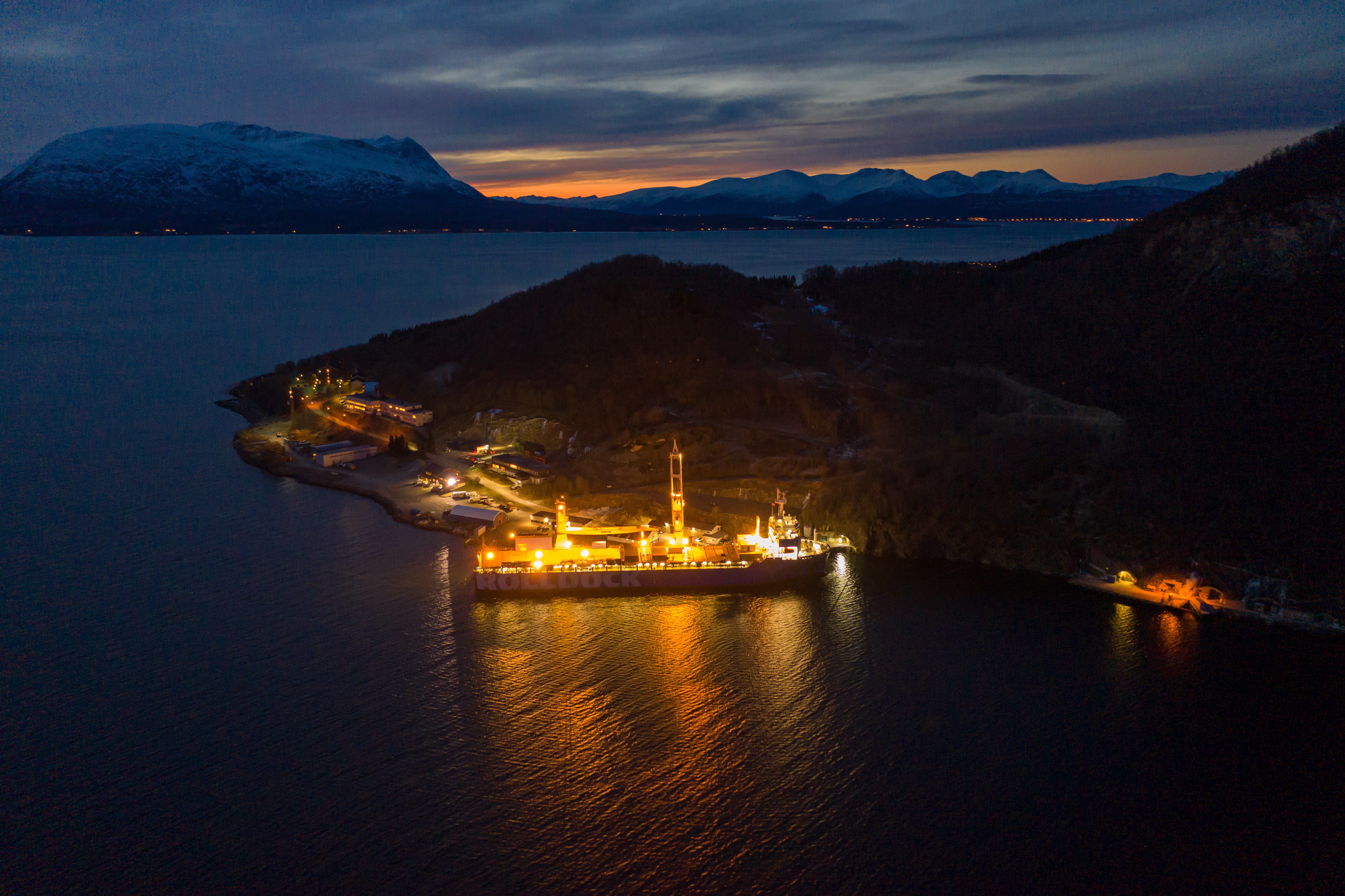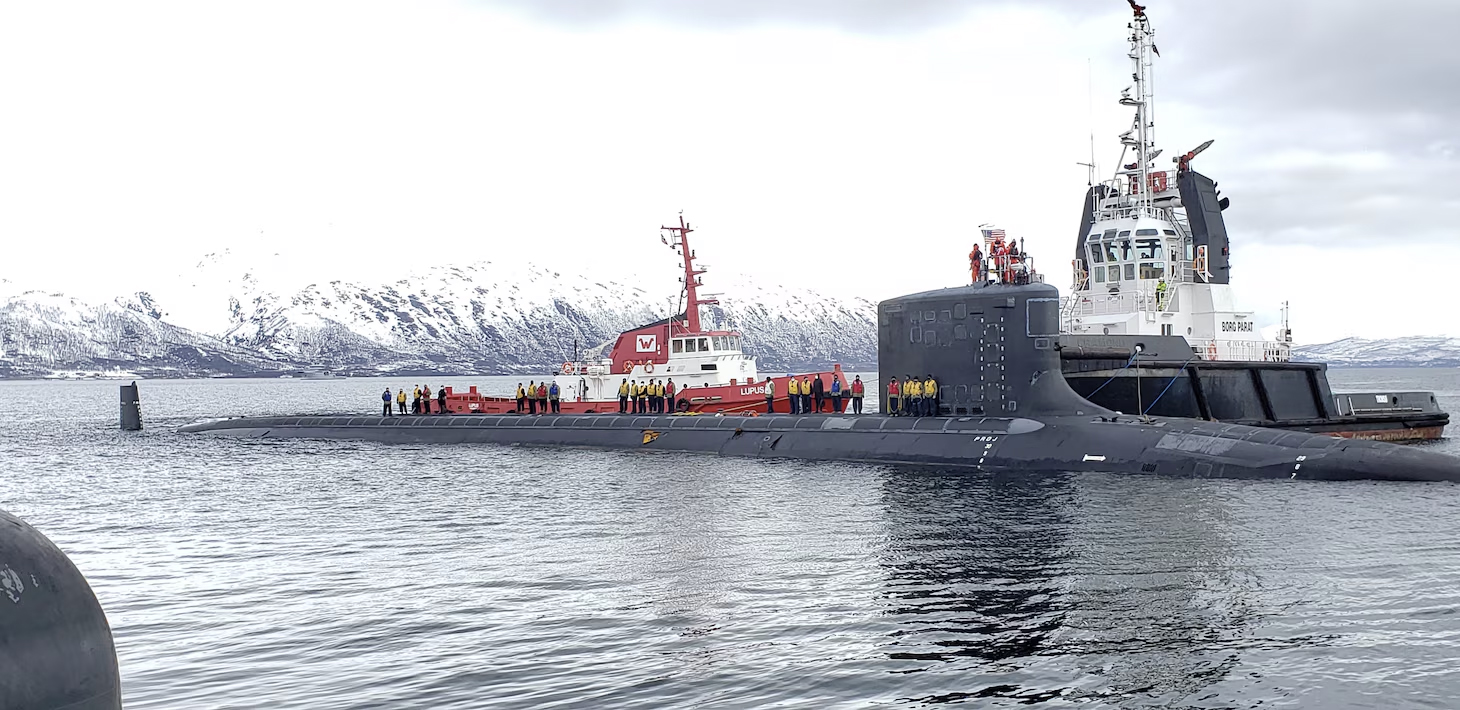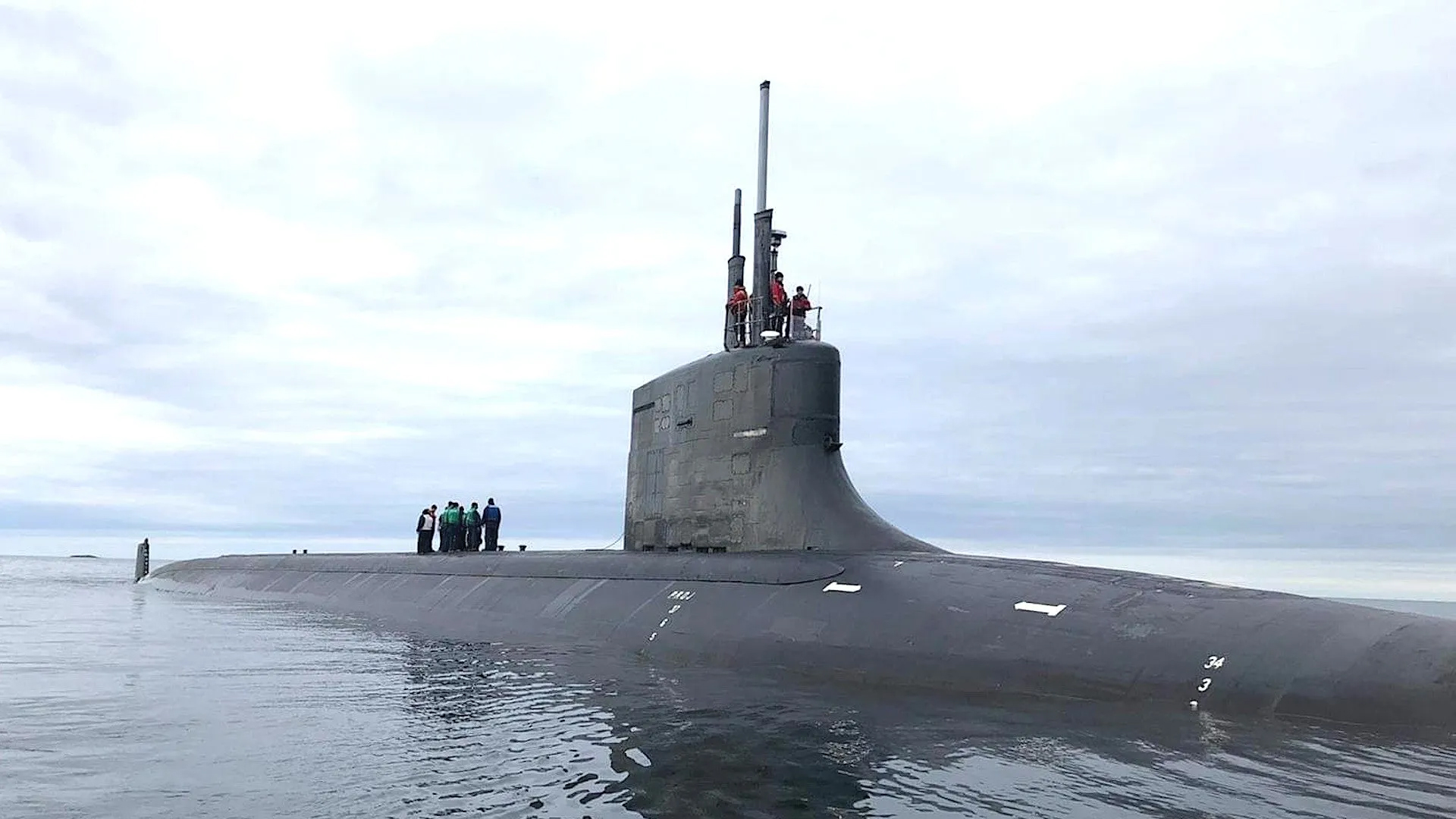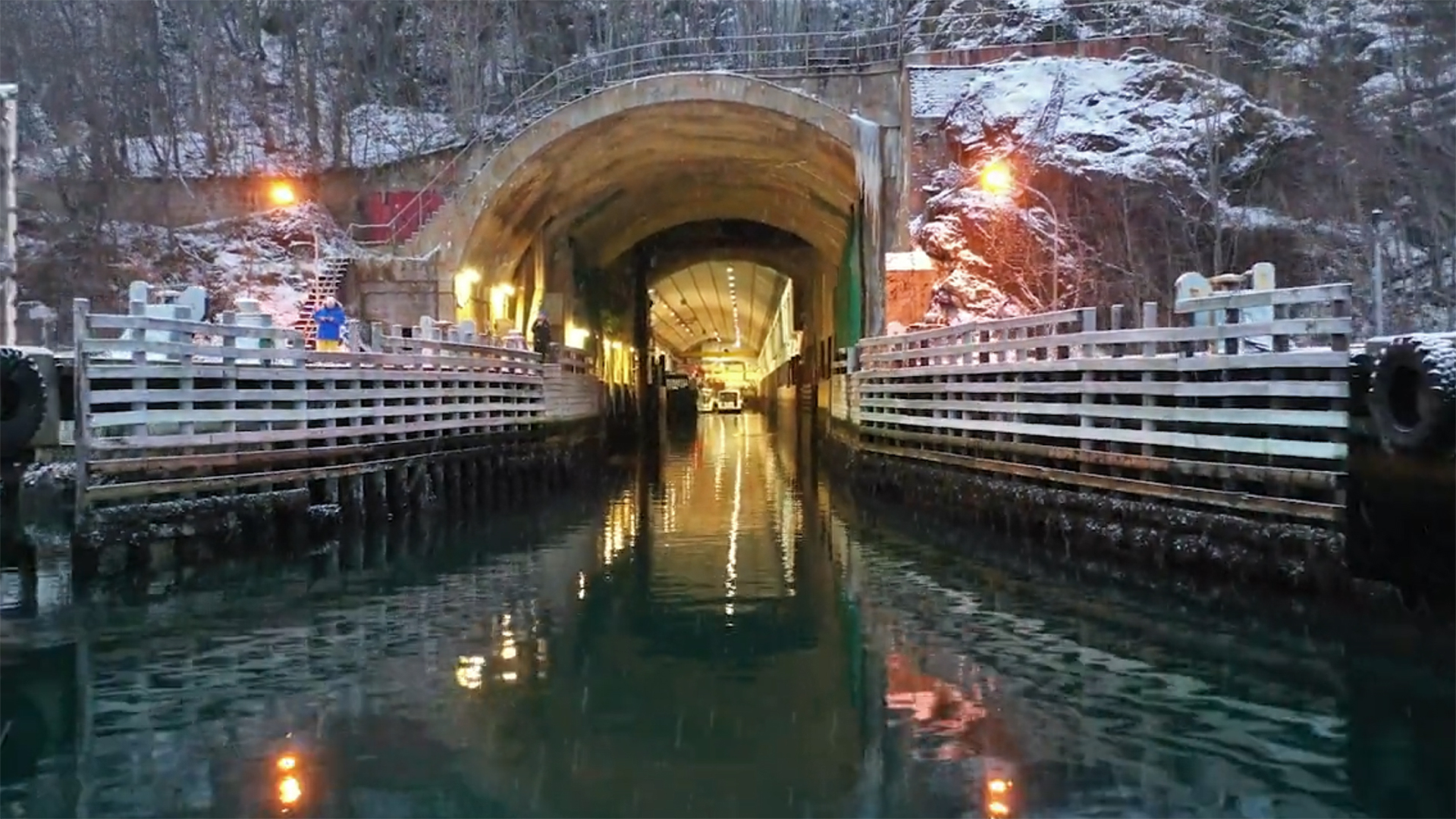The U.S. Navy has long eyed a return to a cavernous former Royal Norwegian Navy base that could serve as a convenient support point for submarine operations in the Arctic. But if and when American boats will ever be able to return to the Cold War-era Olavsvern complex remains to be seen.
Olavsvern appeared poised to return to operations in late 2020, when Norway’s state broadcaster NRK first reported that the complex could again be used by American submarines, and that U.S. military officials had made multiple visits to the site in anticipation of a new lease deal.
But U.S. and Norwegian officials told TWZ this week that, to date, such plans have not materialized. While officials have not provided the precise reasons for the stall, it’s been years since an American submarine has used the facility, with U.S. 6th Fleet telling TWZ that a sub last visited the installation in 2009.

The complex would appear to offer several advantages for U.S. forces headed into the Arctic. Nestled in the nation’s fjords near the Norwegian Sea, and built under a mountain, the once-secretive Olavsvern base would provide America’s silent service with a prime port location for facilitating patrols in the nearby Barents Sea and Arctic region, waters heavily trafficked by the Russian fleet. Such hardened facilities are complicated and very expensive to build, and portions of the complex sit beneath nearly 900 feet of rock.

“We’d like to go back there,” a U.S. defense official told TWZ on condition of anonymity to discuss private deliberations. “The location speaks for itself.”
Submarine caves are rarer than they once were during the Cold War, but some are still in use around the globe today, including much more modern and elaborate facilities. China has a massive submarine cave that is capable of housing nuclear submarines at the Yulin Naval Base on the South China Sea’s Hainan Island, for instance. Go here to read more about what we know of the complex.
How long it might actually take for the U.S. Navy to restart operations there, and what alterations would be required to support nuclear submarines, remains unclear. Images suggest that America’s submarines could not fit into the complex’s submarine tunnels, but deep-sea quays for larger vessels, including nuclear subs, sit on the outside of Olavsvern, according to the Arctic Institute, a nonprofit American think tank. Questions also remain about what kind of servicing would be offered to American boats there. Beyond a quick resupply port call or relatively minor fixes, nuclear submarines require extensive support infrastructure.

Geography aside, past TWZ reporting from when a new deal appeared close to completion showcased other aspects of Olavsvern that could make it an ideal U.S. submarine hub in the region. It features 32,000 square feet of deep-water docking space, including a dock for maintenance, and the subterranean areas are accessed via a large blast door and 3,000-foot-long entrance tunnel.
The entire base covers 270,000 square feet. Olavsvern also has barracks, hardened storage areas, and other maintenance facilities above and below the surface.

Olavsvern began as a military fuel depot in the early 1950s and cost $450 million to build over four decades, mostly financed by NATO, according to the think tank, with a massive, hydraulic steel gate installed at the mountain basin’s entrance in the late 1960s, as well as fresh water supplies, a power plant, and ventilation.
Submarines and fast patrol boats were brought into the mountain basin for maintenance and repair during the Cold War, according to the Arctic Institute.

“The base complex soon became an important center for national and Allied exercises and winter training,” the institute says in a history of the complex.
“Olavsvern was also utilized for a significant number of port calls by Allied submarines enroute to and from the High North,” the history continues. “A Norwegian submarine was always kept on 24 hour readiness in the mountain basin, with one submarine always at sea.”

Continued U.S. Navy interest in the facility comes as Russia has expanded its regional operations in recent years. Across Russia’s Arctic territory, this has included an increase in submarine activity and the expansion of its northernmost Arctic base, along with notable physical expansion of a constellation of air and other bases across Russia’s territory in the far north.
The Barents Sea is a critical transit point for Russian submarines and other warships heading from their bases in the northwestern part of the country toward the Atlantic via the so-called Greenland, Iceland, United Kingdom (GIUK) gap.
While 6th Fleet officials said the command continues to work with Oslo to explore using Olavsvern “in ways that would benefit both our shared security and the local community,” NRK has in the past reported on local concerns about safety risks from having nuclear-powered subs in the area.

The Norwegian Ministry of Defense sold the base to a private group in 2013, and ministry officials told TWZ that, “as of today, there are no concrete plans to expand the military use of facilities at Olavsvern.”
Olavsvern is currently held by military logistics services provider WilNor Governmental Services, and the base is primarily used for annual winter training by the Dutch Marine Corps, the firm’s CEO, Vidar Hole, told TWZ Thursday. But Hole said WilNor wants to once again make Olavsvern a logistics hub and High North forward operating base, as it was during the Cold War.

The last military commanding officer of the base before it was sold relayed that nuclear-powered subs made more than 150 port calls there over the years, according to Hole.
“The infrastructure for receiving SSNs and their crews is intact and in good working condition,” he said. “The technical status of the base, including submarine compliant port infrastructure, has been documented thoroughly by various allied site surveys as well as by a commercial surveying company.”
But before Olavsvern could ever once again accommodate nuclear subs, the firm requires approval from Norwegian radiation authorities, Hole said.
“We have earlier requested the MoD assistance to initiate this process,” he said. “Regrettably, we do not have clarity on if and when they will accommodate our request.”
Norwegian MOD officials did not answer a TWZ query regarding that request by deadline.
Hole said the base has hosted several U.S. senators and U.S. embassy staff, with a bipartisan group of senators visiting the nearby city of Tromsø in 2023.
Outside Olavsvern, the U.S. submarine force has in recent years conducted several port visits in nearby Grøtsund harbor, north of the nearby city of Tromsø, which “accommodates U.S. submarines very well,” 6th Fleet officials said. The Virginia class attack submarine USS New Mexico (SSN-779) visited in May 2021.

The Ohio class guided-missile submarine USS Florida (SSGN-728) made its own visit there in September 2023, and the secretive attack submarine USS Seawolf (SSN-575) also made a high-profile visit to the area in 2020.

While Olavsvern was sold as part of the post-Cold War drawdown undertaken by Western militaries after the fall of the Soviet Union, Norway has seen “a significant increase” in the number of visits by American, British and French submarines since Russia annexed Ukraine’s Crimea region in 2014, according to the Arctic Institute.
“According to the Norwegian Radiation and Nuclear Safety Authority (DSA), the number of visits has increased from 10-15 to 30-40 visits per year (except for 2020, when the number of port calls was fewer),” the institute states in its history of Olavsvern.
As NATO members in Europe surge defense spending and capabilities in the face of Russia’s war in Ukraine and continued saber-rattling against the West, it remains unclear if or when Olavsvern will ever be dragooned into the effort, and whether its expansive and fortified capabilities will ever once again be utilized to counter Moscow in the Arctic. Either way, American and NATO submarines will undoubtedly continue to work to expand their operations and influence in the increasingly critical region.
Contact the author: geoff@twz.com
